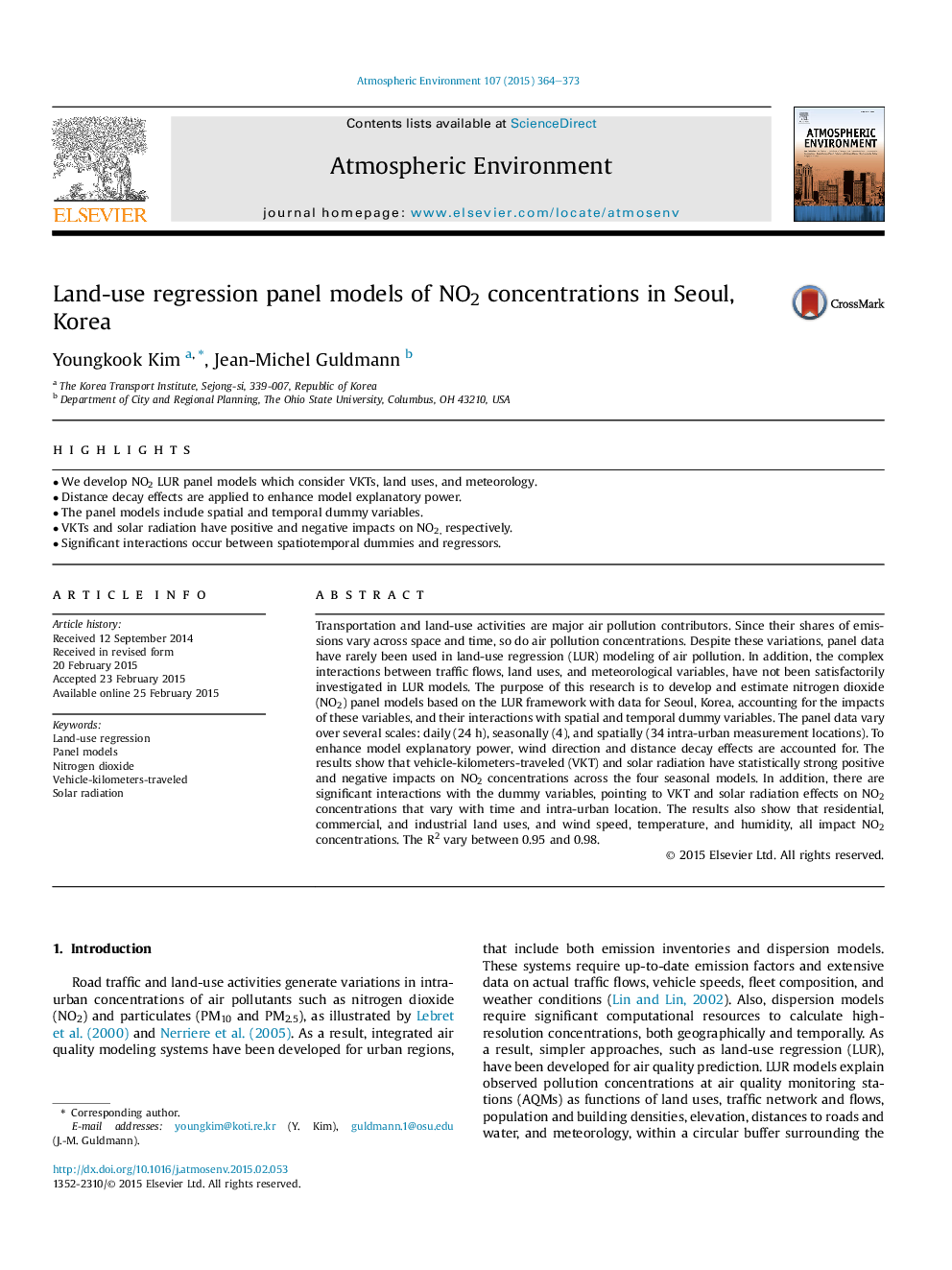| Article ID | Journal | Published Year | Pages | File Type |
|---|---|---|---|---|
| 6338468 | Atmospheric Environment | 2015 | 10 Pages |
Abstract
Transportation and land-use activities are major air pollution contributors. Since their shares of emissions vary across space and time, so do air pollution concentrations. Despite these variations, panel data have rarely been used in land-use regression (LUR) modeling of air pollution. In addition, the complex interactions between traffic flows, land uses, and meteorological variables, have not been satisfactorily investigated in LUR models. The purpose of this research is to develop and estimate nitrogen dioxide (NO2) panel models based on the LUR framework with data for Seoul, Korea, accounting for the impacts of these variables, and their interactions with spatial and temporal dummy variables. The panel data vary over several scales: daily (24Â h), seasonally (4), and spatially (34 intra-urban measurement locations). To enhance model explanatory power, wind direction and distance decay effects are accounted for. The results show that vehicle-kilometers-traveled (VKT) and solar radiation have statistically strong positive and negative impacts on NO2 concentrations across the four seasonal models. In addition, there are significant interactions with the dummy variables, pointing to VKT and solar radiation effects on NO2 concentrations that vary with time and intra-urban location. The results also show that residential, commercial, and industrial land uses, and wind speed, temperature, and humidity, all impact NO2 concentrations. The R2 vary between 0.95 and 0.98.
Related Topics
Physical Sciences and Engineering
Earth and Planetary Sciences
Atmospheric Science
Authors
Youngkook Kim, Jean-Michel Guldmann,
